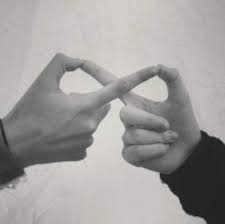Hello, my fellow citizens of steemopolis,
I come to you today with another interesting topic in mathematics on the concept of infinity. Due to our limitations (of probably our minds) infinity is a really difficult concept to grasp and imagine. Comparing other infinities is an even harder task. Comparing infinites raises a couple of questions as to if they come in sizes. Mathematic they say is the language of the universe, but it seems its rules changes as things get smaller or to a very large scale.
Let me paint a picture for you. I suppose we all know the counting numbers {1,2,3,4,5…} used in making a list. These set of numbers are called the natural numbers (0 is exclusive). Let’s look at the Set of natural numbers between 1 and 20 (i.e. x: 1≤x≤20). If all the even numbers are taken out, we are left with the odd numbers in the set.
Naturally, it Goes without saying that even and odd numbers are proper subsets of natural numbers in the set given. If we increase the number of elements in the set of natural numbers, let say from 1 to 100, we can still tell that the set of natural numbers has a higher cardinal numbers when compared to the set of even or odd numbers.
But does the same thing happens when we consider the infinite set of natural numbers?
Could the set of natural numbers be greater than even numbers or could there be a bijection between the two sets? Which of these sets would you say have a larger number of elements (cardinality).
By conventional wisdom, one might think “natural numbers are a combination of both odd and even numbers so natural numbers should have a larger number of elements” making it seem as though there are smaller infinities. But sadly, that’s wrong. Both sets are equal in size.
Two sets are said to be equal if there exist a bijection (a one to one pairing) between their elements. A mapping could be made from the natural numbers with the function f(x) =2x (x represents each element in the set of natural numbers) to the even numbers. This function maps every element from the natural numbers set to a unique image in the even numbers set.
| Natural numbers (list) | Even numbers |
|---|---|
| 1. | 2 |
| 2. | 4 |
| 3. | 6 |
| 4. | 8 |
| 5. | 10 |
| 6. | 12 |
| 7. | 14 |
| … | … |
As shown on the table above, a natural number is matched to an even number.
The natural are also known as counting numbers, so basically, they are used in making list. If a list of the infinite set of even numbers could be made, then it should have the same cardinality because the list could be numbered (with the natural numbers).
The behavior of real numbers is unspeakable. I usually feel that there are more real numbers between 0 and 1 than there are natural numbers. I feel so because if we was to count the real numbers from 0 to 1, we wouldn’t decide the next number after 0. This is so because no matter how small the number we pick is, let’s say 10-9999999999999, there would always be a number smaller than that number. The entire set of real numbers form a set of uncountable infinity. The natural numbers on the other hand, countably finite.
| Natural numbers (list) | Real numbers |
|---|---|
| 1. | 0 |
| 2. | 0.000000000000000000000000000000001 |
| 3. | 0.000000000000000000000000000000002 |
| 4. | 0.000000000000000000000000000000003 |
| 5. | 0.000000000000000000000000000000004 |
| 6. | 0.000000000000000000000000000000005 |
| 7. | 0.000000000000000000000000000000006 |
| … | … |
The reals are uncountably infinite because there is no space between real numbers. A handful of number will always come between two reals. The table above even shows this we could get more than a billion more numbers between the number mapped to 1 and 2 of the naturals. This brought about the continuum hypothesis.
it states: there is no set whose cardinality (number of elements) is strictly between that of the integers and the real numbers.
Mathematicians stumbled upon this problem about 100 years ago. In 1900, David Hilbert, a German mathematician put the continuum hypothesis at the top of a list he made for the most important Problems in mathematics.
Come to think of it, if the real numbers are unimaginably large, the complex numbers would just be exponentially large as well. For a complex number, both the real and imaginary parts could be real numbers. I feel for every real number there could exist an infinite amount of imaginary numbers in a complex number.
I don't want to talk about the contiuum hypothesis in this article, I will talk about it in one of my next posts.
Do you think infinities come in sizes? Do you even think infinities should even be compared?
Here is a bonus question; is the number of real numbers between 0 and 1 greater than the number of real numbers between 0 and 50?
I want to wish all citizens of steemopolis a happy new year. Sorry this is coming late.
Thank you all for reading. Upvotes and comments would be appreciated.


The set of real numbers between 0 and 1 is uncountable infinite.
Downvoting a post can decrease pending rewards and make it less visible. Common reasons:
Submit
Yeah it is. There are more numbers there than there are particles in on earth.
Downvoting a post can decrease pending rewards and make it less visible. Common reasons:
Submit
Fellow mathematician...
Downvoting a post can decrease pending rewards and make it less visible. Common reasons:
Submit
Smiles.
Thanks for stopping by.
Downvoting a post can decrease pending rewards and make it less visible. Common reasons:
Submit
Congratulations @geniusvillain! You have completed some achievement on Steemit and have been rewarded with new badge(s) :
Click on any badge to view your own Board of Honor on SteemitBoard.
For more information about SteemitBoard, click here
If you no longer want to receive notifications, reply to this comment with the word
STOPDownvoting a post can decrease pending rewards and make it less visible. Common reasons:
Submit